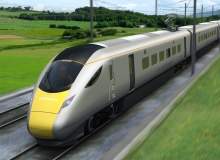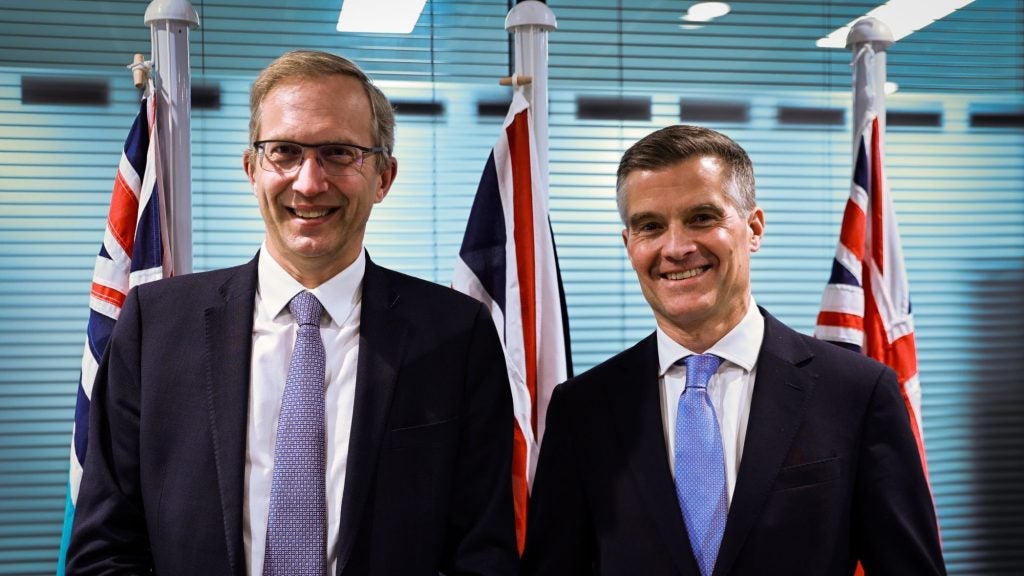
Hitachi class 800 train” height=”320″ src=”https://www.railway-technology.com/wp-content/uploads/image-digitalinsightresearch/Archive/nri/railway/Hitachi%20class%20800.jpg” width=”430″ />
Back in July 2012, a deal worth £4.5bn was made by the UK government for 596 carriages for Hitachi’s Class 800 (bi-mode) and Class 801 (all-electric) trains to serve the East Coast and Great Western main lines as part of the Intercity Express Programme (IEP). In 2013, a second deal was made, worth £1.2bn, for an additional 30 electric trains to replace the Intercity 225s on the East Coast line.
Promising to increase capacity, reduce carbon emissions and transform intercity travel for passengers, the "no train, no pay deal" – a first of its kind in the UK – is anticipated to generate £3.3bn in additional revenue through improved journey times and exceptional reliability.
One of the main reasons that the Class 800 has the potential to transform intercity rail travel lies in Hitachi’s innovative strategy behind powering the trains, particularly when it comes to the East Coast line, the London to Edinburgh route renowned for its overhead line failure problems.
By introducing bi-mode, diesel-electric trains – which offer greater flexibility on lines as well as the opportunity to be fully operational whether overhead lines are damaged or not – and implementing a back-up generator on the entire 800 series, these new trains will be able to move away from troubled areas while still providing heating, lighting and power to passengers.
See Also:
Currently, in the event of an overhead line failure, trains remain stationary until the problem is averted, causing lost revenue, cancellations and often heavily disrupted services.
How well do you really know your competitors?
Access the most comprehensive Company Profiles on the market, powered by GlobalData. Save hours of research. Gain competitive edge.

Thank you!
Your download email will arrive shortly
Not ready to buy yet? Download a free sample
We are confident about the unique quality of our Company Profiles. However, we want you to make the most beneficial decision for your business, so we offer a free sample that you can download by submitting the below form
By GlobalDataIn order to find out more about the 800 series, Hitachi’s part in the Intercity Express Programme and why these trains will be such a breakthrough for British transportation, Frances Marcellin spoke to Andy Barr, Hitachi Rail’s chief operating officer.
The tram-train concept allows a railway vehicle to run as an on-street tram serving city centres and also as a commuter train running on existing local rail networks.
Frances Marcellin: Can you give some details surrounding the deal made with Hitachi to supply trains for the Department of Transport’s (DfT) Intercity Express Programme?
Andy Barr: Agility Trains is a joint venture between Hitachi and John Laing Developments who are equity partners in the project, and Agility Trains has sub-contracted Hitachi to provide trains, depots and maintenance to the East Coast and Great Western routes, which have to be accepted by Agility Trains, the train operators and the DfT. The contract secures private finance, which provides funding to build the trains and depots together with a daily usage charge which is paid only when the train is available for use – so the first time they actually pay for the train is on the first day that the train is being used by passengers.
Once the trains are completed they have to go through a delivery, completion and acceptance testing process and are then offered to the DfT for acceptance. This is different from the norm, where usually penalties do not occur relating to performance or reliability, but it is actually a huge incentive for us to build trains that are very reliable and to a very high standard.
FM: What benefits can Hitachi’s Class 800 bring?
AB: The new trains will run at 125mph, but are capable of running at 140 miles per hour, and they can accelerate more quickly, which would lead to further journey time reductions. The new trains will also contribute to a reduction in emissions and CO2. They will also provide greater capacity – and not just because the individual cars are longer at 26 metres. The current intercity trains have a diesel locomotive at each end of the train and that’s dead space that can’t be used for carrying passengers. The Class 800 and 801 have all propulsion equipment under the floor, so more room for passengers. That combined with the longer vehicles means that the trains have far greater capacity.
FM: The trains are being built at a state-of-the-art factory in Newton Aycliffe, County Durham – an £82mn investment in British manufacturing – is this construction project on target?
AB: Manufacturing plant construction has started and will be completed towards end of 2015 with train production due to start in 2016. They will initially be tested for acceptance by the customer and then it is envisaged that they will enter service on a trial basis towards the end of 2016, which lasts for six months. In 2017 we will start putting trains into service on a regular basis.
FM: Overhead line failure is often a problem on the East Coast line. Can you give an example of why the power fails?
AB: The overhead wire is 25,000 volts, which runs above the train and is a copper contact wire which is strung up between gantries roughly every 100 metres. The train is equipped with a pantograph, a piece of equipment like an arm that raises up to touch the copper contact wire. This arm is designed to place pressure on the wire and rub it, thus drawing power into the train where it is transformed into various voltages, propulsion for the train, lighting and heat, and so on.
In the case of weather interference, a high wind for example can blow the wire away from the contact area and if that happens while the train is moving and the pantograph loses contact it could, it can in its worst case damage the wire as it’s trying to make contact with something that is no longer there. So that’s one problem that usually causes a big delay – and because it can take up to a mile for a train to stop, due to its weight, it will be a long section that is damaged. This means that all the power has to be turned off and the train – and all the others in the same area – can’t move.
FM: How does the Class 800 diesel-electric version help train companies to overcome problems with overhead line loss or failure?
AB: The main reason behind the bi-mode train design is that at some point on their journey, on both the Great western and East Coast lines, some of the trains will encounter a route where there isn’t an overhead wire. For instance, on the East Coast, when the train gets to Edinburgh and starts heading towards Aberdeen, that route isn’t electrified and currently there isn’t a plan to change that either. It’s designed so that the train would leave London running on electric power, with the engine switched off, and at Edinburgh the engine will be switched on so the passengers don’t have to change trains, they can simply continue their journey to Aberdeen.
But, of course, a great benefit is that if there is a problem with the overhead power, or it is switched off, bi-mode can continue on its own power completely unhindered.
Railway-technology.com lists some of the world’s most expensive trains based on fares per night in March 2013.
FM: There’s also a back-up generator on the all-electric trains?
AB: On the full electric version they still have one generator engine on the train that is able to power the train for a short distance to get it out of a troubled area and provide "hotel power", the lights and heating, without the overhead power being switched on. All intercity express trains have the ability to at least move slowly out of the area and provide lighting and heating. Normally with an electric train if the overhead power fails then you can’t move and after a small amount of time the lights go out and there’s no heating.
FM: So Hitachi’s Class 800 trains could make a big difference?
AB: Yes, the new train sets will change everything. This is a ground-breaking product. It will completely transform intercity travel – people will travel faster, there will be more frequent trains with a higher acceleration, better journey times and that will drive its own growth. I think we’ve got something that is going to be of great use to operators all around the UK.
Follow Frances Marcellin on Google+







